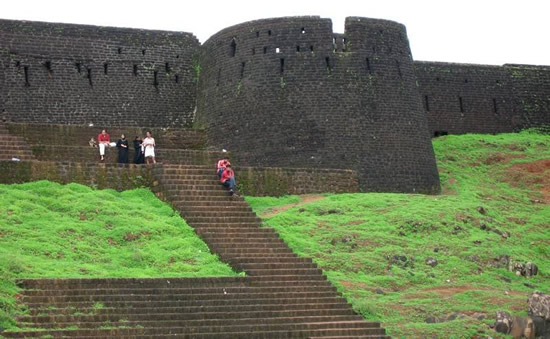| History |
Lying on the north western coast of the State, Kasargod was famous from time immemorial. Many Arab travellers, who came to Kerala between 9th and 14th centuries A.D., visited Kasargod as it was then an important trade centre. They called this area Harkwillia. Mr.Barbose, the Portuguese traveller,who visited Kumbla near Kasargod in 1514, had recorded that rice was exported to Male Island whence coir was imported. Dr.Fracis Buccanan, who was the family doctor of Lord Wellesly, visited Kasargod in 1800. In his travelogue, he has included information on the political and communal set-up in places like Athiparamba, Kavvai, Nileshwar, Bekkal, Chandragiri and Manjeshwar.
In 1763 Hyder Ali of Mysore conquered Bednoor and his intention was to capture entire Kerala. But when his attempt to conquer Thalassery Fort was foiled, The British got Canara only after the death of Tippu Sulthan in 1799. Kasargod was part of Bekal taluk in the South Canara district of Bombay presidency. Kasargod taluk came into being when Bekal taluk was included in the Madras presidency on April 16, 1882. Though Vengayil Kunhiraman Nayanar moved a resolution in 1913 on the floor of Madras Governor's Council demanding the merger of Kasargod taluk with the Malabar district, it had to be withdrawn because of the stiff opposition of the members from Karnataka. In 1927,a political convention held at Kozhikode, passed a resolution stressing the above demand. NATIONAL MOVEMENT Kasargod played a prominent role in the National Movement for the freedom of the country. Mohammed Sherul Sahib and Kandige Krishna Bhat were the frontline leaders of the independence movement. Umesh Rao, K.M.Krishnan Nambiar, Shreesankarji, Naranthatta Raman Nair, A.C.Kannan Nair, T.Gopalan Nair, The agrarian struggles to end the exploitation and oppression by landlords |
Friday, April 9, 2010
HISTORY OF KASARAGOD
Subscribe to:
Post Comments (Atom)


No comments:
Post a Comment